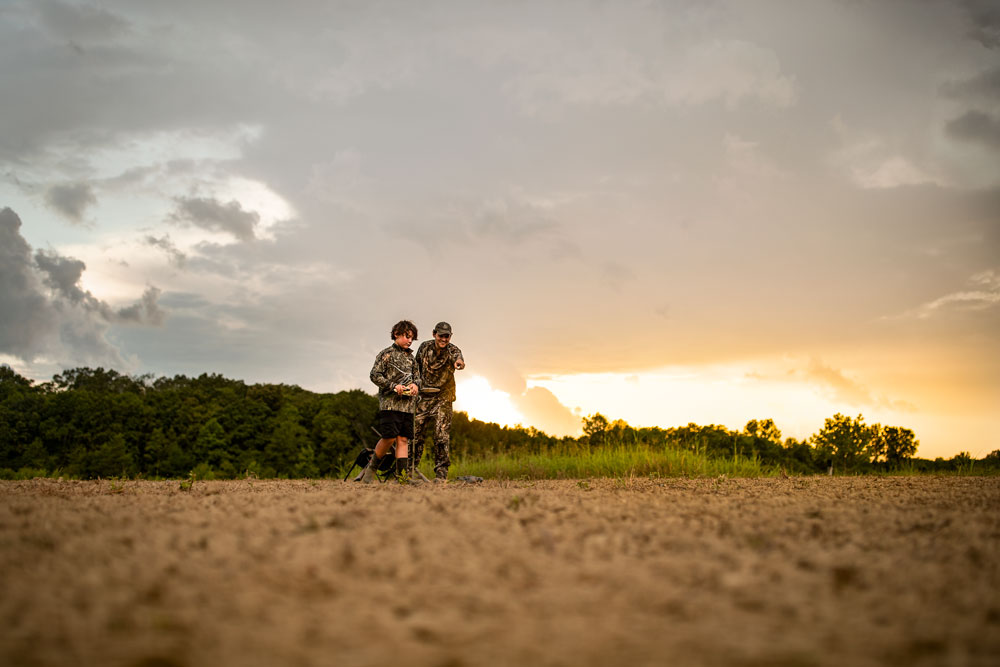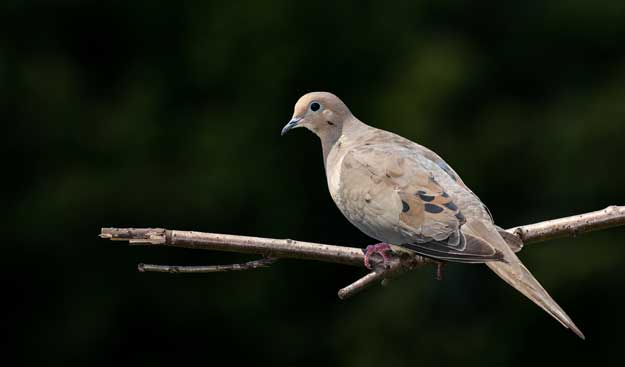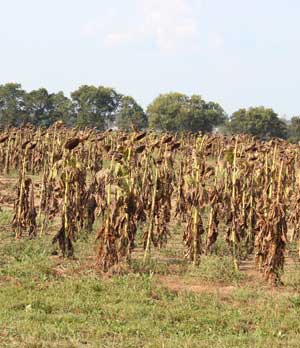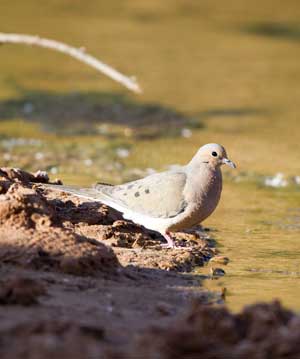by Brad Fitzpatrick from “To Build a Better Dove Field” from the Summer 2017 issue of GameKeepers Magazine

For many, dove hunting is the kick-off to fall, and as the first of September approaches I have one thing on my mind…mourning doves. These common birds are popular with hunters and they make excellent table fare (who doesn’t like dove breast with jalapenos, cream cheese and bacon?), but finding a good place to dove hunt can be a challenge. To ensure you add these delectable edibles to your next dinner menu, take matters into your own hands by including the following dove hunting tactics into your strategy.

Before the Hunt
The mourning doves’ needs are relatively few; they require open ground for feeding, preferably with grit or gravel to help digest their diet that consists almost entirely of seeds, a place to perch and/or roost and plenty of water. If you have all of these things, the shooting action will be fast and hot.
Taking the time to plan your dove field layout is critical to the ultimate success of the project and the overall hunt. Knowing where the best food sources are will serve hunters well in locating doves. Doves eat anywhere from 14-20% of their bodyweight on any given day. Their diet consists of seeds, almost exclusively. Seeds such as agricultural crops like corn, grain sorghum and sunflowers are a staple of their diet.
 When you start to plan your dove field, bear these essentials in mind. For starters, you’ll need to provide a food source that attracts birds. Traditionally, hunters have chosen sunflowers, and there’s no doubt that this remains the most popular when attempting to attract doves. However, many hunters are finding that a bit of diversity can actually be helpful in attracting more birds and can make your plot more versatile so that it provides feed for a number of wildlife species.
When you start to plan your dove field, bear these essentials in mind. For starters, you’ll need to provide a food source that attracts birds. Traditionally, hunters have chosen sunflowers, and there’s no doubt that this remains the most popular when attempting to attract doves. However, many hunters are finding that a bit of diversity can actually be helpful in attracting more birds and can make your plot more versatile so that it provides feed for a number of wildlife species.
For instance, grain sorghum is an effective alternative that may actually offer some advantages over traditional sunflower seeds. Whereas sunflower seeds attract doves, turkeys, and a few other species, sorghum actually provides food for doves, quail, turkeys, waterfowl and even whitetails. Plus, sorghum is a natural cover plant for quail, deer and rabbits, so you will find that this plant is the perfect complement to your existing whitetail plots. Sorghum provides high-quality seeds and lots of them, and a single bag will cover an acre or more, making this an affordable alternative to sunflowers.
It’s important to note that doves won’t feed on ground with heavy vegetation. Instead, you’ll see them picking along disturbed areas like new construction, mowed fields, gravel roads and harvested crop fields. That means the key element to any successful dove field is an open area where the birds can feed effectively and efficiently. For that reason, herbicide-based weed control is essential. Dove fields that are weed-free simply require bush hogging near the beginning of the hunting season to produce an ideal environment for feeding birds.
If you time your planting right, control weeds during the summer months and offer the birds ample open feeding areas you’ll be surprised at the number of doves that utilize a single field.
GameKeeper Quick Tip: Dove fields don’t require much space. Obviously larger fields will attract more birds, but even small plots will bring in a few dozen or more on a daily basis. And while you could donate a couple of acres in one location to a bird field, consider splitting your fields into two different locations. This serves several purposes. First, it keeps the birds moving. As birds fly from one field to the next they offer more shot opportunities. Secondly, multiple fields allow you to hunt one field while resting the other; which leads to the next tip.
In the Field
 It is critical to position yourself where you will be exposed to the majority of incoming traffic. Consider the bird’s direction of travel. If your fields lie on either side of a water source and/or roost cover, then you’ll probably have a good idea of the direction the birds will be traveling which can be a great aid in hitting these fast-moving little targets.
It is critical to position yourself where you will be exposed to the majority of incoming traffic. Consider the bird’s direction of travel. If your fields lie on either side of a water source and/or roost cover, then you’ll probably have a good idea of the direction the birds will be traveling which can be a great aid in hitting these fast-moving little targets.
If possible, set up with the sun at your back. That offers you the advantages since doves have very keen eyesight and will be hard to hit when they are coming in with the sun behind them. It’s well worth your time to plant a strip of cover grass like Biologic’s Egyptian Wheat that will serve to hide the hunters from the birds. Good cover prevents the birds from seeing the hunter and flaring, and when that happens what might have been an easy shot has just devolved into a fast-paced crack at one of the fastest and most agile birds in the world.
GameKeeper Quick Tip: Egyptian wheat grows quickly in a wide variety of soils and reaches heights that will conceal you from a bird coming from any direction. It will also hide your field from the prying eyes of passersby.
Since doves are visual, it’s worthwhile to set up decoys to distract them during the approach. These can be stationary decoys placed in trees or on the ground or motion decoys like the Mojo VooDoo Dove. Having a few dove decoys around is one of the best ways to get birds to commit to your field, especially after they have been hunted.
Like most game animals, doves are sensitive to pressure. Hunting in the same field too often or for several consecutive days will lead to lower success rates. The best option is to offer them multiple options. Even when rotating fields, you sometimes apply so much pressure they will avoid the area, especially if multiple hunters are trying to take a limit every day. You’re far better off to rest fields and hunt each one no more than once or twice each week. If you do so there’s a good chance that the birds will return quickly and you’ll actually shoot more limits and experience better hunting.































